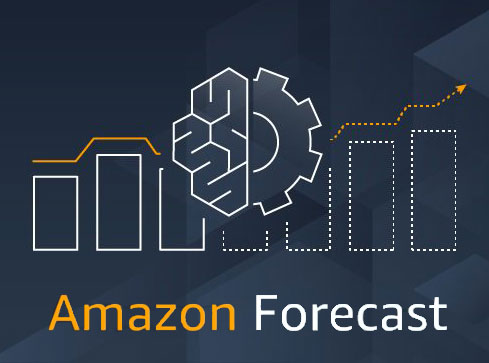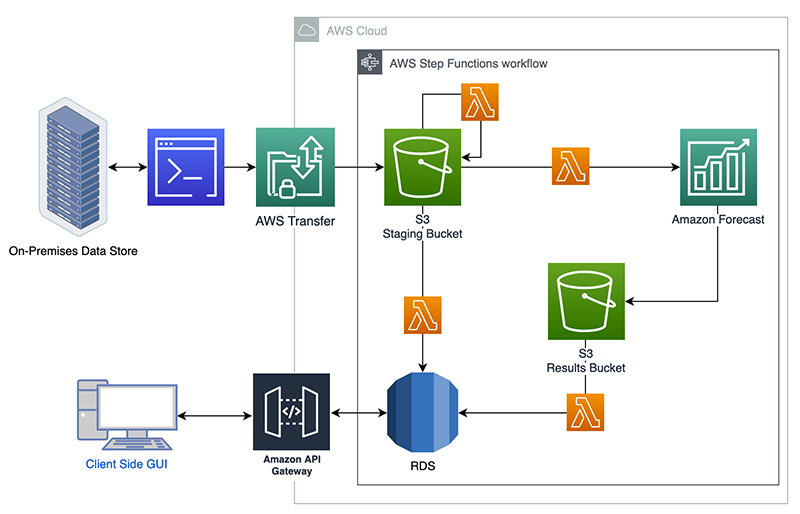What is Amazon Forecast and How Does it Work?
Amazon Forecast is a powerful, cloud-based service that harnesses the prowess of machine learning to generate highly precise time-series forecasts. This innovative solution enables businesses to make informed decisions by analyzing historical data and external factors, thereby optimizing demand predictions. Amazon Forecast is compatible with a wide variety of data formats and can be integrated seamlessly with other Amazon Web Services (AWS) offerings.
The Role of Amazon Forecast in Business Operations
Amazon Forecast plays a pivotal role in enhancing business operations by improving demand planning, inventory management, and resource allocation. This advanced machine learning service empowers businesses to generate highly accurate time-series forecasts, enabling them to make data-driven decisions and optimize their resources. By analyzing historical data and external factors, Amazon Forecast provides valuable insights that can be applied across various industries, including retail, manufacturing, and finance.
In the retail sector, Amazon Forecast can help businesses predict customer demand, optimize inventory levels, and reduce waste. By accurately forecasting sales trends, retailers can ensure they have sufficient stock to meet customer needs without overstocking and tying up capital. Moreover, Amazon Forecast can assist manufacturers in forecasting production requirements, managing supply chains, and reducing downtime. In finance, this service can help financial institutions predict market trends, manage risk, and optimize investment strategies.
Getting Started with Amazon Forecast: Step-by-Step Instructions
Step 1: Setting Up Your AWS Account
To begin using Amazon Forecast, you must first create or log into your Amazon Web Services (AWS) account. AWS offers a wide range of services, including Amazon Forecast, which can be accessed through the AWS Management Console. To create a new AWS account, visit the AWS homepage and follow the instructions provided. If you already have an AWS account, simply log in using your existing credentials.
Getting Started with Amazon Forecast: Step-by-Step Instructions
Step 2: Creating an Amazon Forecast Workspace
Once you have set up your AWS account, you can begin using Amazon Forecast by creating a workspace. A workspace is a logical boundary for your data, models, and forecasts, allowing you to manage resources and collaborate with your team. To create a new workspace, sign in to the AWS Management Console, navigate to the Amazon Forecast service, and follow the on-screen instructions. Ensure that you have the necessary permissions to create and manage resources within AWS.
When creating a workspace, you will be prompted to connect it to your AWS account. This process typically involves selecting your AWS region and providing the necessary IAM roles or permissions for Amazon Forecast to access your data and resources. After successfully creating a workspace, you will be able to start preparing your data and creating forecasts.
Getting Started with Amazon Forecast: Step-by-Step Instructions
Step 3: Preparing Your Data
Data preparation is a crucial step in ensuring accurate and reliable forecasts with Amazon Forecast. Begin by gathering historical data, which can include time-series data, item metadata, and external factors that may influence demand. Amazon Forecast supports various data formats, such as CSV and Parquet, allowing you to easily import and analyze your data.
Before uploading your data, ensure that it is clean, well-formatted, and free from errors. This may involve removing duplicates, filling in missing values, and standardizing date and time formats. Amazon Forecast uses datasets and datasets groups to organize your data, making it essential to structure your data accordingly. Once your data is prepared, you can upload it to Amazon Forecast and begin creating forecasts.
Getting Started with Amazon Forecast: Step-by-Step Instructions
Step 4: Creating a Forecast
After preparing your data, you can create a forecast using Amazon Forecast. Begin by selecting a forecast model, which can be chosen based on the nature of your data and the specific use case. Amazon Forecast offers several built-in algorithms, such as ARIMA, ETS, and DeepAR+, allowing you to select the most appropriate model for your needs.
Once you have selected a model, you can initiate the training process, during which Amazon Forecast will analyze your historical data and external factors to generate a forecast. Training times may vary depending on the size and complexity of your data. After training is complete, you can evaluate the accuracy of your forecast and make any necessary adjustments, such as tweaking model parameters or selecting a different algorithm.
Monitoring and updating your forecasts is an essential part of using Amazon Forecast effectively. Regularly review your forecasts to ensure they remain accurate and up-to-date, and consider re-training your models as new data becomes available. By integrating Amazon Forecast into your business operations, you can optimize demand planning, inventory management, and resource allocation, ultimately driving growth and success.
Best Practices for Amazon Forecast Implementation
Amazon Forecast is a powerful tool for businesses seeking to improve their demand planning, inventory management, and resource allocation. To maximize the benefits of Amazon Forecast, consider the following best practices:
Regularly Update Datasets
Ensure that your datasets are up-to-date and reflect the most recent historical data and external factors. Regularly updating your datasets can help maintain the accuracy of your forecasts and improve overall performance.
Monitor Forecast Accuracy
Regularly evaluate the accuracy of your forecasts and make adjustments as needed. Monitoring forecast accuracy can help you identify potential issues early on and ensure that your forecasts remain accurate and relevant.
Integrate Forecasts into Business Operations
To fully leverage the power of Amazon Forecast, integrate your forecasts into your business operations. This can include using forecasts to inform purchasing decisions, optimizing inventory levels, and adjusting resource allocation based on predicted demand.
Consider External Factors
When creating forecasts, take into account external factors that may influence demand. This can include seasonality, promotions, and market trends. By considering these factors, you can generate more accurate and reliable forecasts.
Collaborate with Your Team
Amazon Forecast allows for collaboration within teams, enabling you to work together on forecasting projects and share insights and best practices. Leveraging the collective knowledge and expertise of your team can help improve the accuracy and effectiveness of your forecasts.
Comparing Amazon Forecast with Alternative Forecasting Solutions
When selecting a forecasting solution, it’s essential to consider the advantages and limitations of each option. Amazon Forecast offers several advantages over alternative forecasting solutions, including enhanced accuracy, ease of use, and seamless integration with AWS services.
Accuracy
Amazon Forecast leverages machine learning algorithms to analyze historical data and external factors, delivering highly accurate time-series forecasts. This accuracy can translate into improved demand planning, inventory management, and resource allocation, ultimately driving growth and success for businesses.
Ease of Use
Amazon Forecast is designed to be user-friendly, with a simple and intuitive interface that makes it easy for businesses to create, manage, and evaluate their forecasts. This ease of use can help businesses save time and resources, allowing them to focus on other critical aspects of their operations.
Integration with AWS Services
As a cloud-based service, Amazon Forecast integrates seamlessly with other AWS services, enabling businesses to leverage the full potential of the AWS ecosystem. This integration can help businesses streamline their workflows, improve collaboration, and enhance overall efficiency.
Considerations
While Amazon Forecast offers several advantages, it’s essential to consider potential limitations and use cases. For instance, Amazon Forecast may not be the best solution for businesses with limited historical data or those operating in niche markets. Additionally, businesses should ensure they have the necessary resources and expertise to effectively leverage Amazon Forecast and generate accurate and reliable forecasts.







